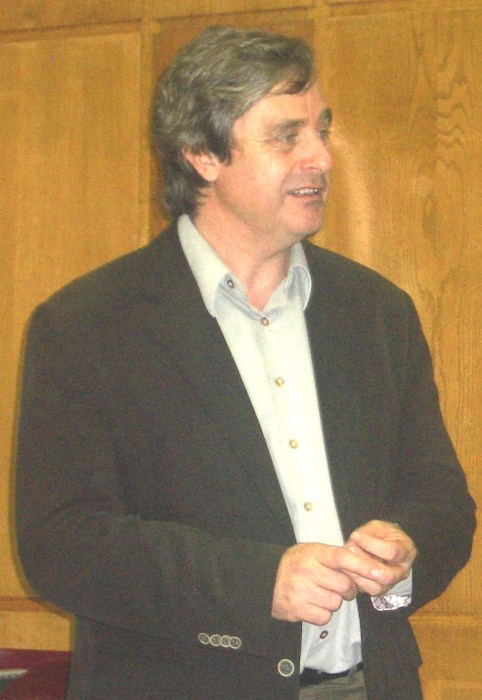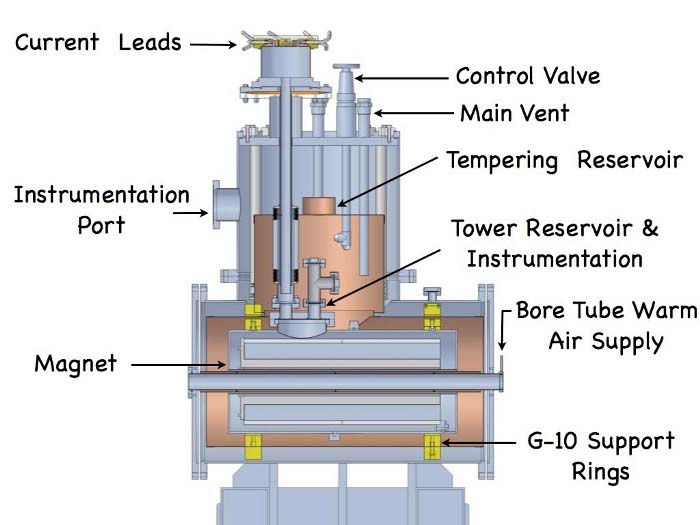Director's Corner
12 February 2009
 Barry Barish |
Involving Spain in the ILC R&D programme
We had a nearly two-day meeting with the Spanish particle physics groups to explore collaborations for the ILC last month, immediately following the Funding Agencies for Large Colliders (FALC) meeting in Madrid. During the FALC meeting, Juan A. Fuster Verdú gave an overview of the particle physics programme in Spain, and we had more detailed discussions of the programme and possible collaborations the next two days. These meetings gave us a much better understanding of the capabilities and ambitions of the Spanish groups and gave them a better picture of the opportunities in ILC R&D and design work. We expect to continue these productive discussions, leading up to increased Spanish involvement in the ILC.
High-energy physics research in Spain is part of a nationally funded programme in particle physics, nuclear physics and astroparticle physics and cosmology (both experiment and theory), information technology (especially a large effort developing the Grid), R&D in accelerators and detectors and an interesting programme of physics applications for medicine). The programme involves a large number of institutions and universities with about 65 percent of the resources dedicated to work connected with CERN, including a large commitment to grid technology and including involvement in all four LHC experiments.
In addition to the substantial CERN involvement, Spain has been building major facilities at home. Ramon Pascual told us about the ALBA Synchrotron Light Source, which is one of the largest projects in Spain along with the 10.4 metre-telescope in the Canary Islands. ALBA is a third-generation light source nearing completion, and among other things it is serving to develop accelerator physics expertise in Spain. A broad research programme is envisaged, as well as a programme promoting innovation with the public and private sectors working in many different fields. ALBA is 270 metres in diameter, has a beam energy of 3 GeV, a designed beam current of 400 milliamperes and horizontal emittance of 4.3 nanometres radians. During his presentation, Roman mentioned a cost/benefit study they had done for the project. Apparently this is standard procedure in Spain and it seems to me that it is a good example to follow for other large projects in the world. We need to convince our governments of the benefits of the ILC, beyond just the science. We should consider how to carry out such a study for the ILC.
Manuel Serrano gave another interesting presentation on the "Spanish Industrial Involvement in Accelerators." He described the Centre for the Development of Industrial Technology (CDTI), which is a public entity that reports to the Ministry of Science and Innovation. The objectives of the centre are to foster Spanish industrial competitiveness by financing national R&D projects, encouraging Spanish participation in international technological cooperative programmes and to support technology transfer to Spanish industry. CDTI is involved in enabling Spanish participation in large facility development by providing funding and/or interest-free loans to develop prototypes and support industrial technological projects. They also provide help in calls for tender and they have defined accelerators, fusion and astronomy as priority areas.
We heard from Javier Bermejo about the design of the proton accelerator using superconducting RF for the ESS-Bilbao proposal to host the European neutron spallation facility. We also heard about other work and capabilities for accelerators in Spain. On the second day following FALC meeting, Brian Foster, Marc Ross and Akira Yamamoto visited CIEMAT (Centro de Investigaciones Energéticas Medioambientales y Tecnológicas), where they were graciously hosted by Juan Antonio Rubio. CIEMAT has the largest accelerator effort in Spain and has a very long history of collaboration with CERN. They have ambitions to enlarge the effort, and furthering collaboration on ILC will be a natural part of their future programme.
Overall, our visit with the Spanish high-energy physics groups was very informative for both sides and brought out many possibilities for developing our collaboration. We appreciate very much the effort our host made for this visit and we are confident that it is an important step towards building a strong collaboration for the ILC.
-- Barry Barish


